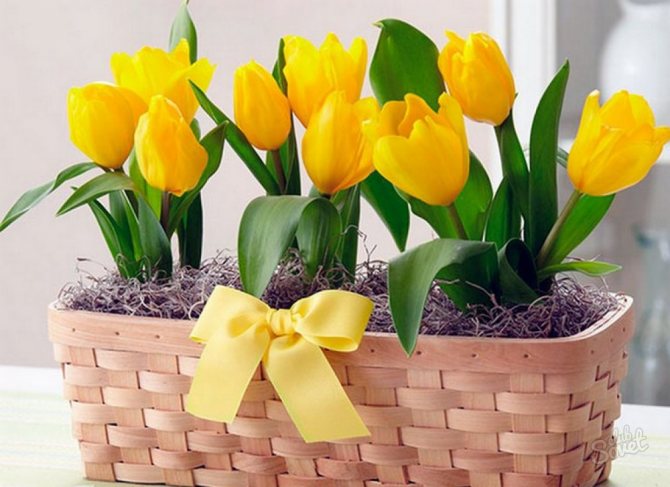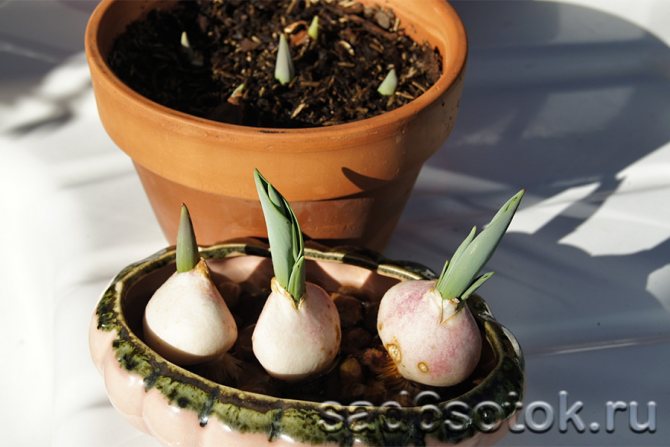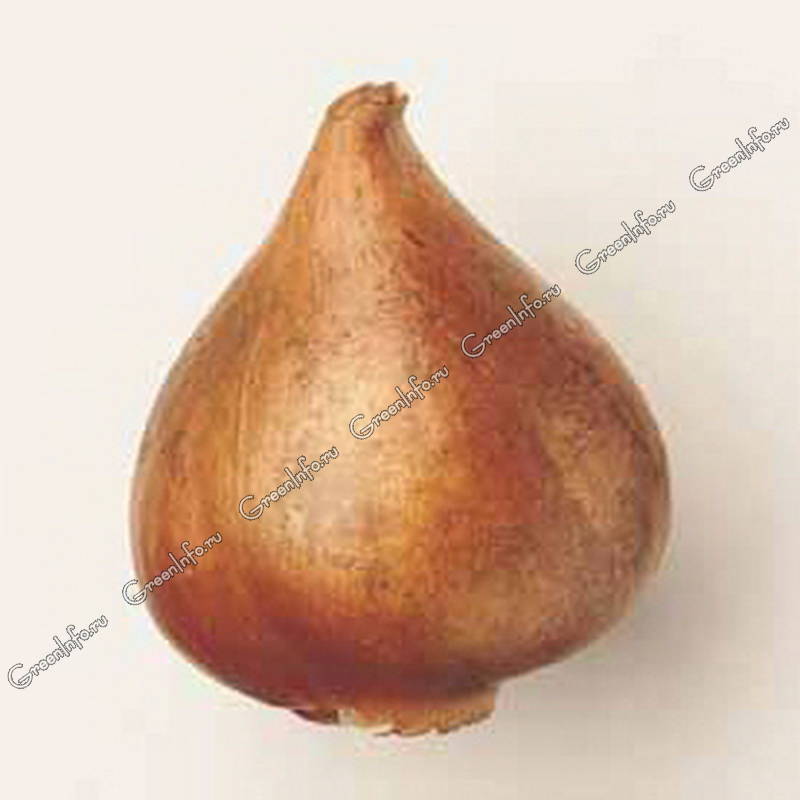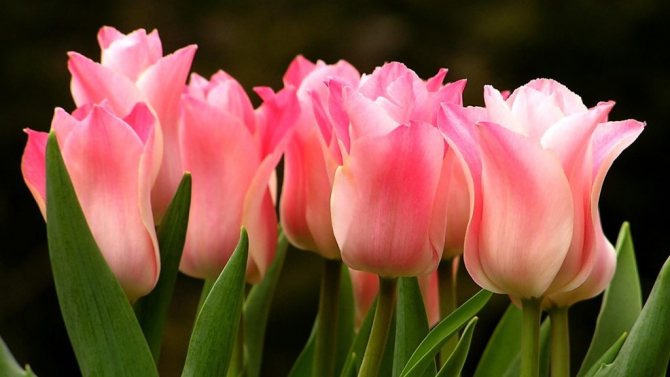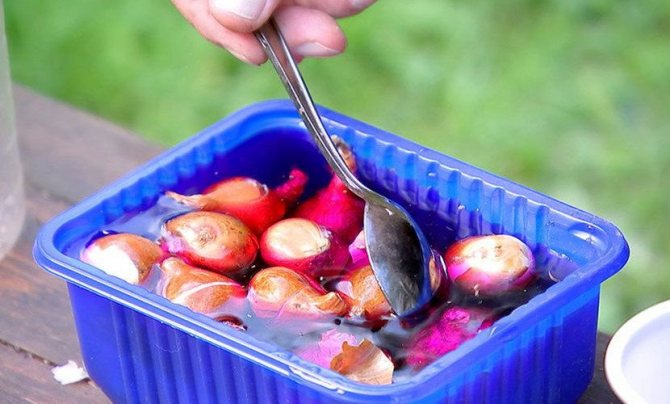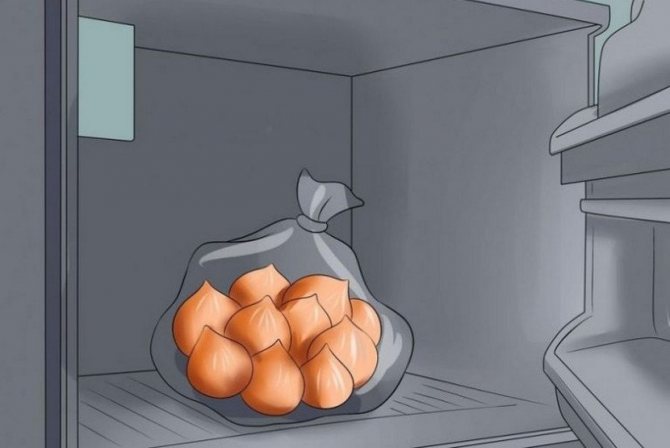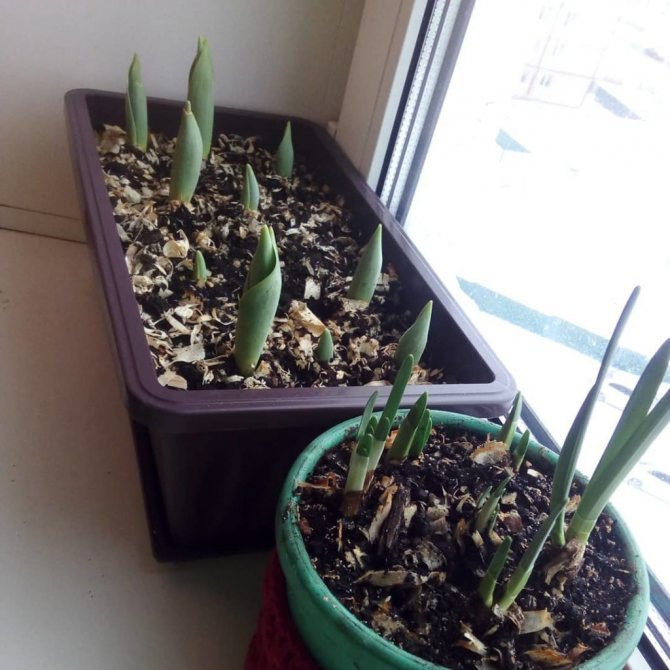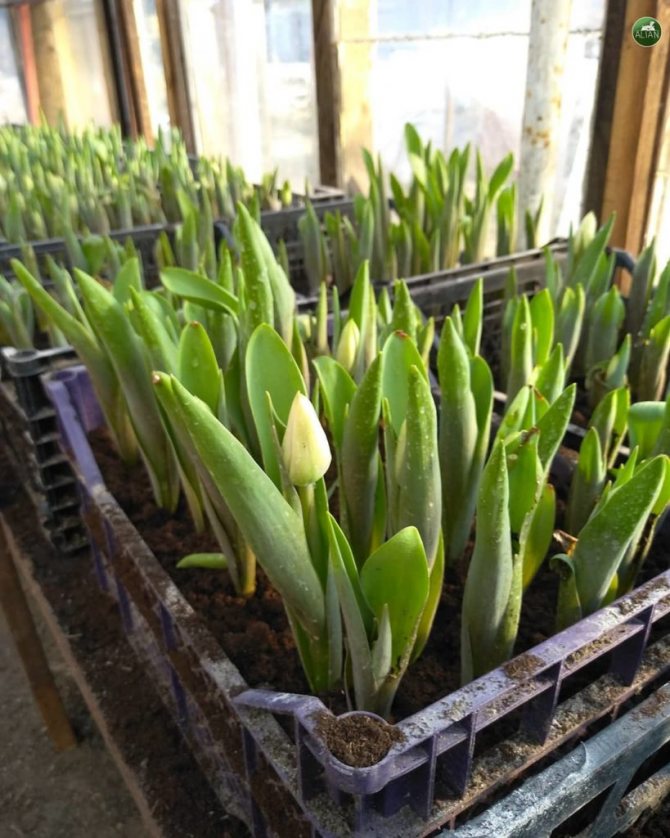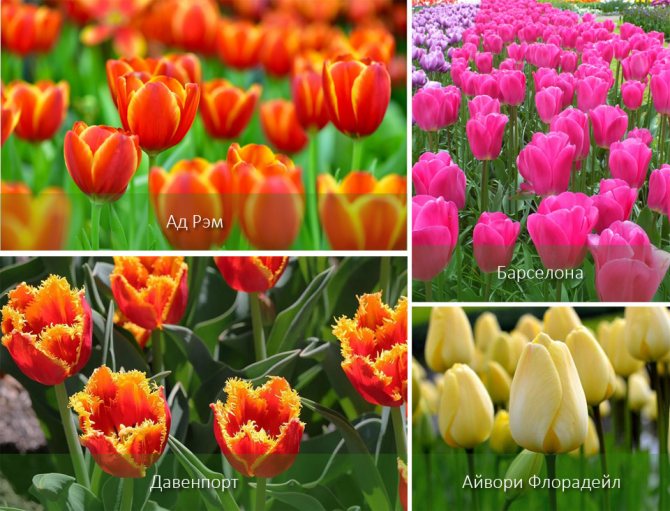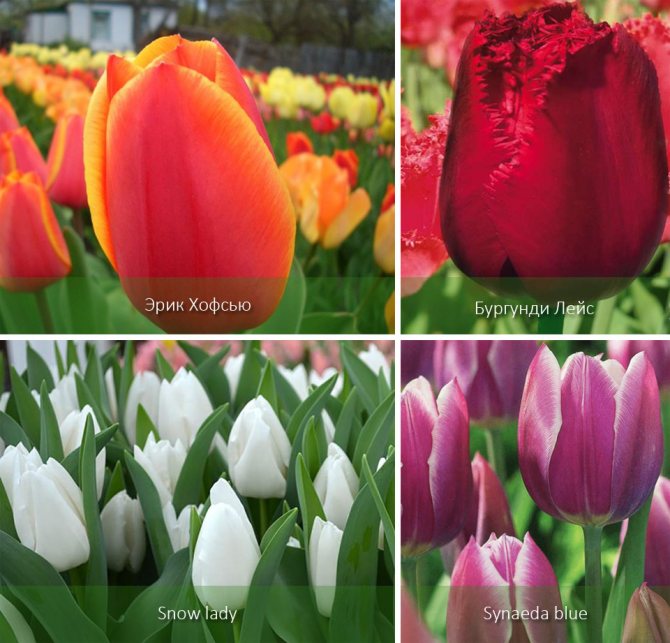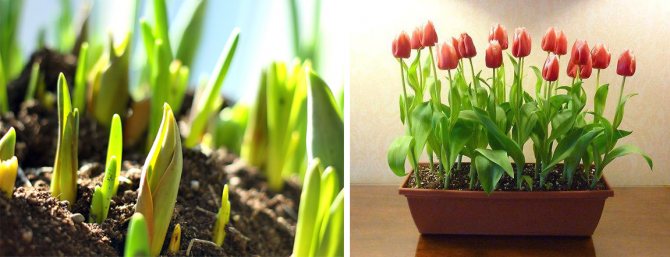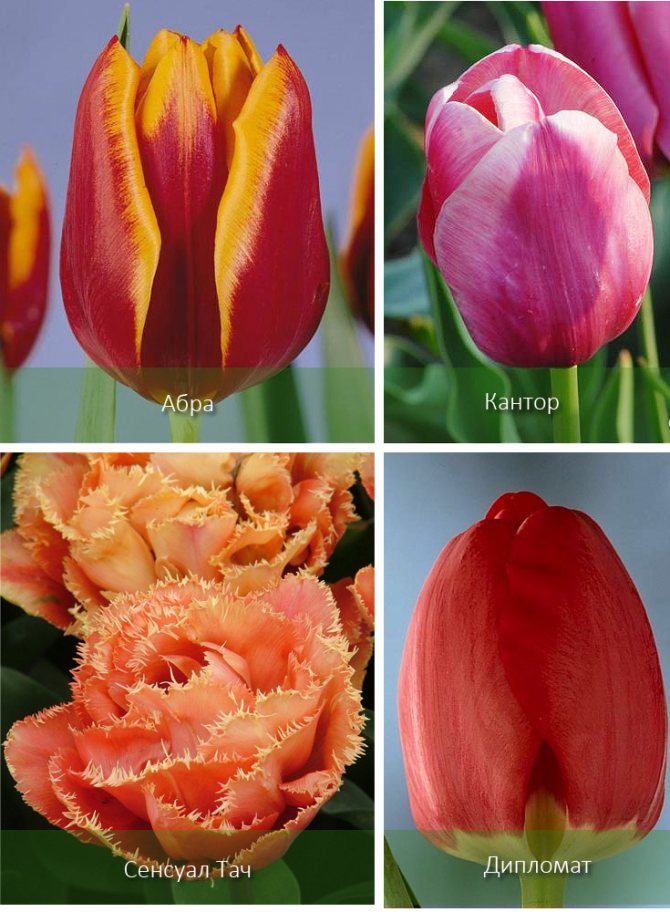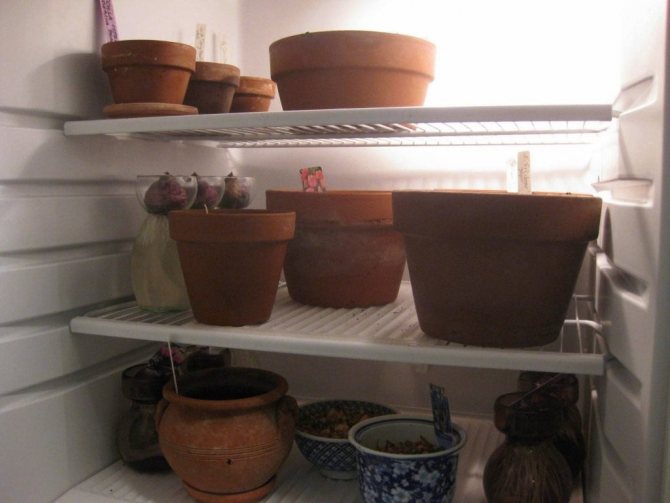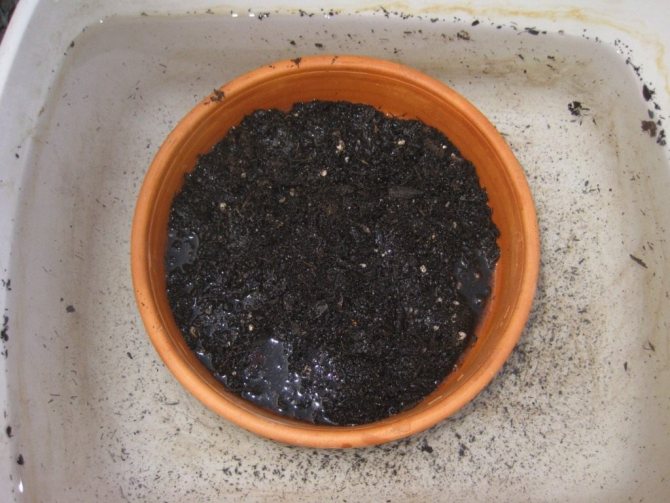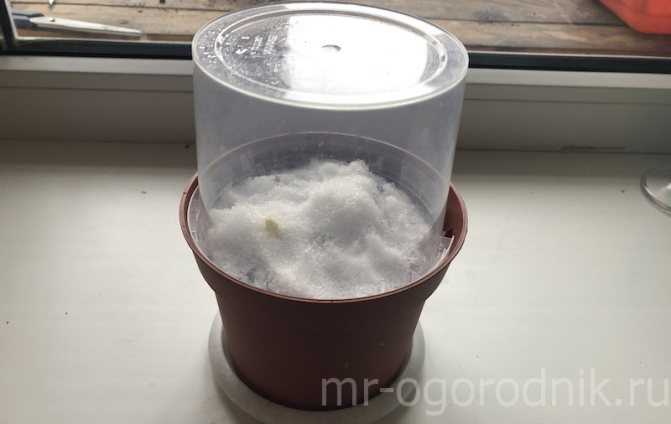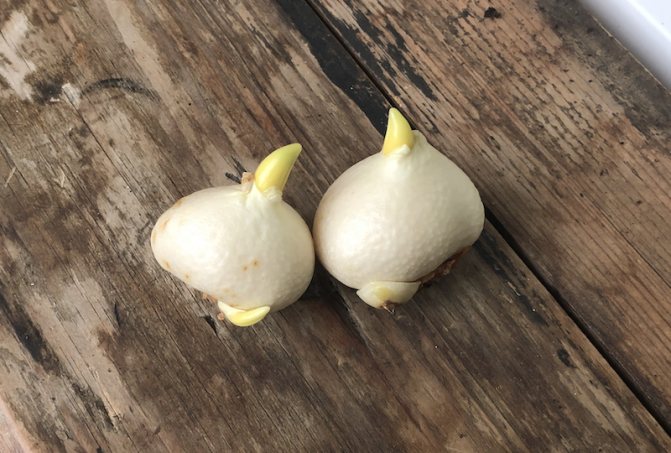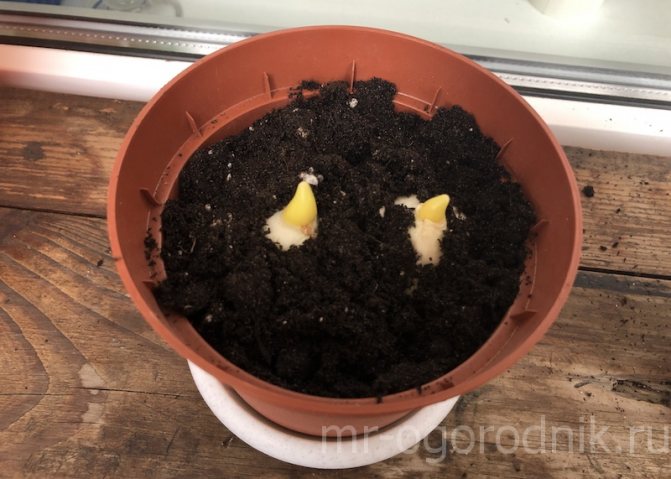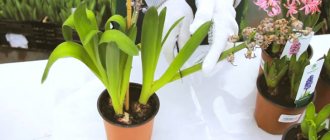What is distillation
Outdoor plants do not bloom in our rooms in winter. However, we can deceive them, convince them that it is time to wake up and bloom, artificially creating the necessary temperature and light conditions. This technique is called forcing bulbous. The entire cycle of forcing can be roughly divided into three stages:
- storage of bulbs after digging from open ground;
- their rooting at low temperatures;
- growing flowers in a heated room until flowering.
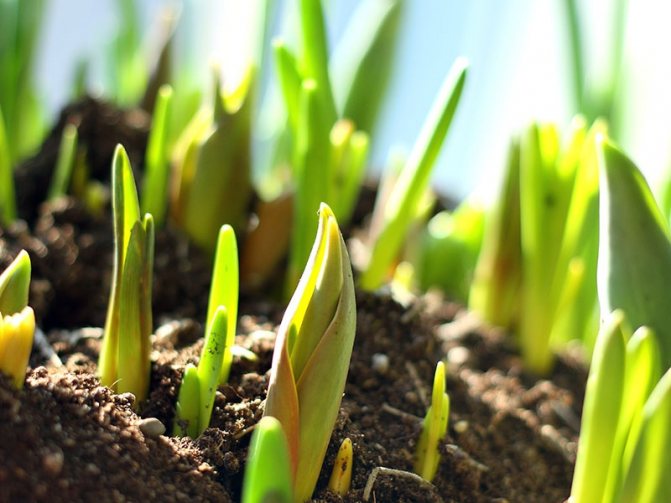
Tulips go through the entire cycle of their development before our eyes. Very exciting, but rather painstaking task. For some, it turns into a hobby. From year to year, amateur flower growers awaken thousands and millions of flowers to life.
Growing bulbs after distillation
Strong bulbs, after forcing in the substrate, can be successfully grown, which allows you to preserve the valuable planting material of the beautiful variety. If the bulbs are of little value, they are thrown away. In any case, they are not suitable for re-forcing.
Tulip bulbs grown under hydroponic conditions, which have used all their internal reserves for flowering and are too weak, also fail in growing. The specimens that have undergone the January distillation grow poorly.
Growing up makes it possible to use the planting material in the future for landscaping and reproduction. Its essence is to create conditions for a tulip growing in a room that are as close to natural as possible. This will enable the plant to accumulate nutrients and complete the development cycle. Therefore, it is important to initially prepare a full-fledged substrate with humus and sod land, it is desirable to apply granular fertilizer and provide lighting.
If low-growing botanical varieties were chosen for forcing, after flowering, remove the short peduncle and leaves, wait three weeks, remove the bulb and dry it.
At the end of the flowering of tall varieties, the wilted flower is carefully removed, leaving a peduncle. The plant continues to be looked after and watered until the leaves begin to turn yellow, then the tulip is carefully taken out of the pot, the soil is shaken off and dried, after which the leaves are removed.
It is better to dry the bulbs for 10-14 days at 24-25 ° C, then the temperature is lowered to 18-20 ° C, maintaining the parameters for a month, then stored in a cool ventilated room at 15-17 ° C. In the fall, the bulbs are planted in the flowerbed in the usual way.
The relevance of tulips to March 8
How to accelerate the growth of garden plants at home in order to have time to grow delicious flowers by the scheduled date, for example, by March 8? This allows for the winter forcing of tulips and other bulbous crops. Experienced gardeners know how to carry out a whole range of activities, awakening tulips to life in a period unusual for them.
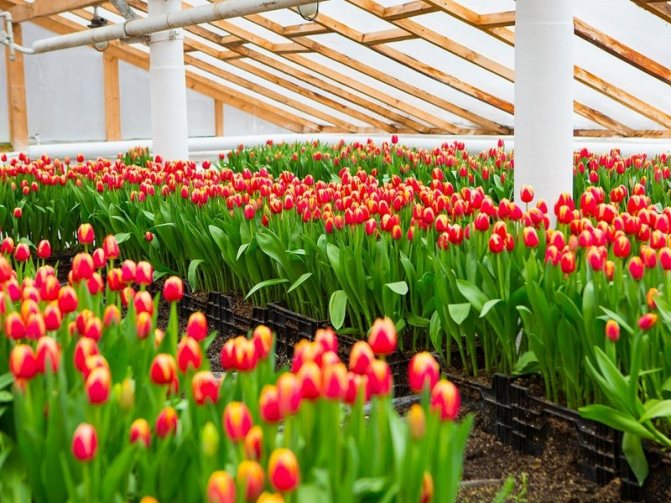

Growing
Approximately 10-15 days before the estimated date of flowering (if we are talking about forcing), a box with seedlings is brought out into the light. At this time, the first sprouting and even grown shoots are already clearly visible. The first week he is in partial shade, the second - already on the sunny side.
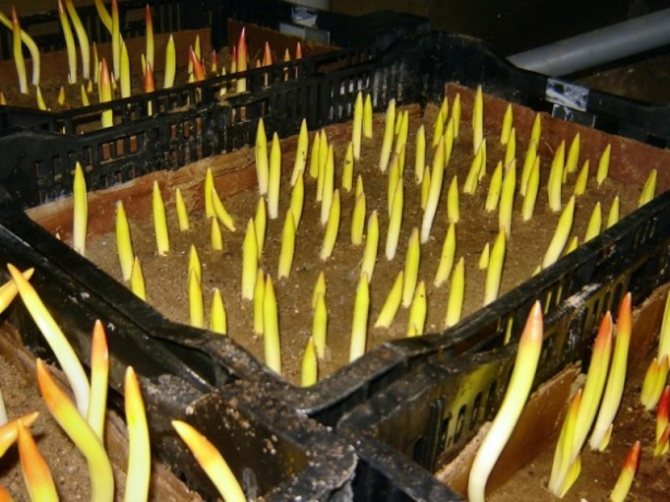

Bulbs in the substrate after cold storage and rooting
- Plants are watered and fed daily with complex fertilizers.
- The water should be at room temperature. The rates and composition of dressings depend on the variety and method of forcing.
- The duration of daylight hours in the last 10 days of forcing should be at least 11 hours, moreover, it is advisable to use maximum sunlight.
- Some varieties may require increased humidity, perhaps even plants will need to spray the leaves and buds with a spray bottle.
- All this must be foreseen in advance so that by the time of distillation it does not become an unpleasant surprise.
- After cutting the tulips, the bulbs spend another 20 days in the ground.
- Then they are dug up and dried as follows: the first two weeks - at room temperature, the remaining time before planting in the ground (in April) - at a temperature of 15-17 ° С.
Basic rules for forcing tulips
For forcing tulips, processing times should be observed and quality material should be used. At the time of planting, the bulbs must have a weight of at least 25 g, having accumulated a sufficient amount of nutrients.
It is possible to calculate the timing of laying the bulbs if you accurately determine the periods of their planting and rooting.
The first period is keeping the plants in a cool place with a temperature of 5-8 degrees for 16-22 weeks, depending on the variety.
The second period is keeping the seedlings in a warm place with moderate lighting at a temperature of 12-15 degrees for three to four weeks.
Adding both periods together, we get the term for distillation of flowers. It remains only to set the date of planting the material.
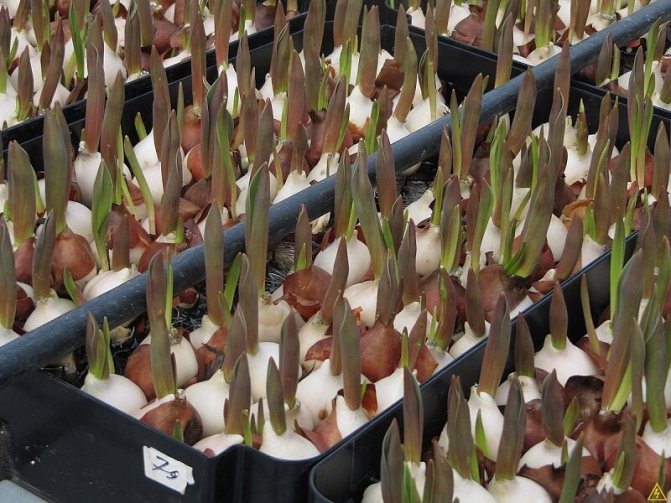

Tulips are planted at several times:
- early landing. Flowers will be ready at the end of December - the first decade of January (by the new year). The best varieties to be distilled this holiday season: Epricot Beauty, Dixis Favorite, Lustigue Battle, Miles Bridge, Diamond Star, Christmas Marvel;
- mid-early landing (for Christmas);
- medium landing (for Valentine's Day). For this period, the varieties Apeldoorn, Oxford, Confux, Scarborough are ideal;
- late landing (by March 8). By this day, varieties are usually grown: Parade, Keys Nelis, Eric Hofsier, London, Diplomat, Vivex.
You can plan the planting of bulbs for other significant dates and events.
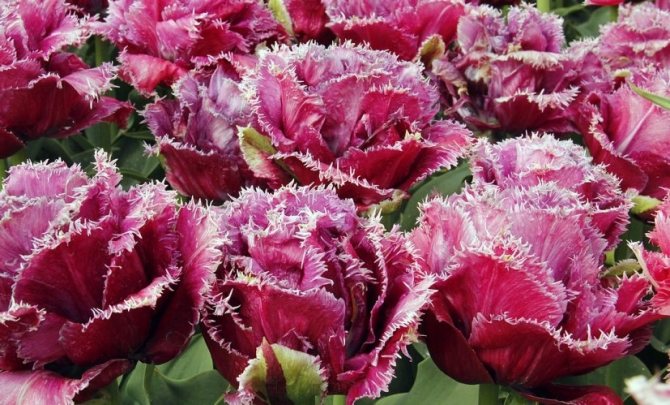

Professional advice
For early distillation no later than March 8, experts recommend choosing only the largest bulbs. Small planting material can germinate successfully, but not bud.
If the bulbs are chilled in the refrigerator, keep them away from fresh fruit. The latter release ethylene, which is harmful to flowers.
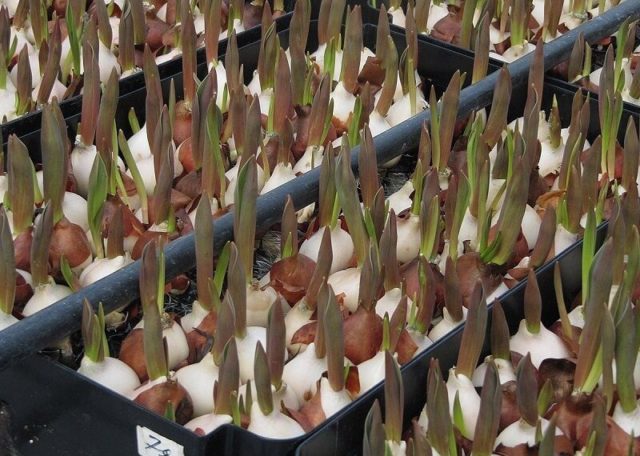

The first tulips in March are grown from the largest bulbs
During the cooling process and during forcing, it is important not to overwet the tulips. If the soil is too moist, the bulbs will simply rot. You also need to observe moderation in dressing, in particular, bursting leaves speak of an excess of nutrients.
Tulip varieties for forcing at home
When choosing a variety and buying bulbs, pay attention to the color class. At home, forcing bulbs is more reliable from class 1 varieties.
Bulbs of Dutch varieties marked "Giant" are selected for forcing tulips. They are stimulant treated, disease resistant, and have tall stems. Consider the characteristics of some of them:
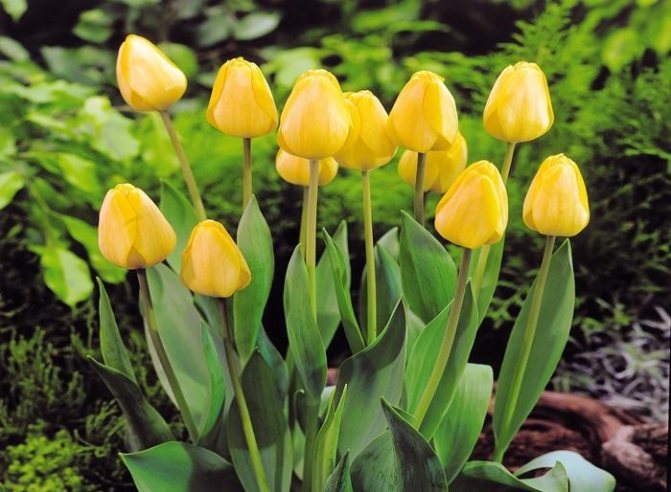

- tulip varieties Apeldoorn differ in color of petals, belong to Darwin's hybrids.Apeldoorn Elite has orange-yellow flowers with a wide yellow border; Golden Apeldoorn is a bright yellow color. The stem height is 45-60 cm, the diameter of the goblet flower is 6-12 cm.


- popular variety Eric Hofsue provides high quality forcing and cutting, winner of many exhibitions. A plant with a powerful peduncle and huge goblet flowers. The color is raspberry red with a creamy white border. Stamens and anthers are yellow.


- grade Keys Nelis belongs to the Triumph group, amazes with the fragrant aroma of large (up to 15 cm) buds of pink-red, fiery orange shades. Goblet buds with incomplete opening. The subtle sweet aroma lasts 8-10 days. The stem is strong, 40–60 cm, with deep green basal leaves.
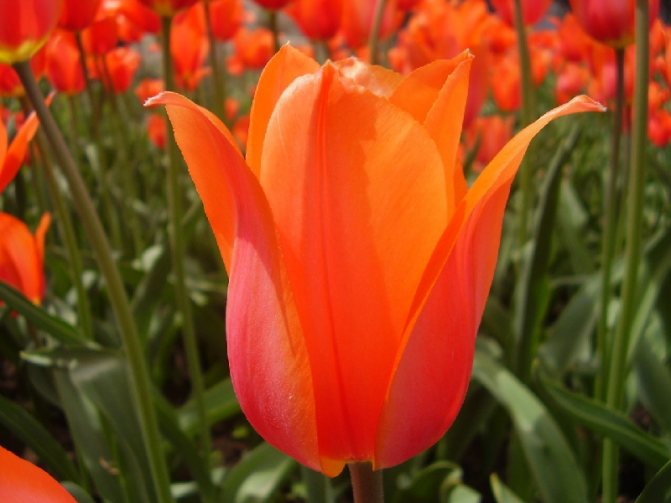

- grade Temple of Beauty in translation means "Temple of Beauty". Plant height reaches from 70 cm to 1 m. The flowers are large salmon-pink with a carrot shade, elongated lily-shaped. The buds are 14 cm. This hybrid is obtained as a result of crossing and is recognized as the largest tulip. The Temple of Beauty family includes more than a dozen varieties of sports from white to dark purple.
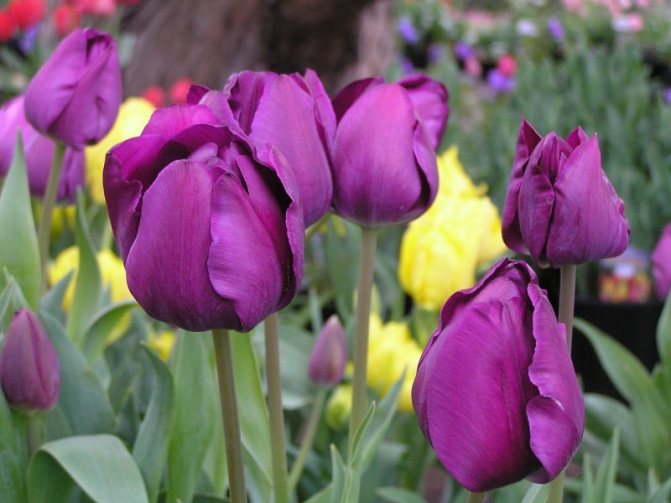

- fabulous variety Negrita with flowers of dark pink, almost purple color grows up to 50-60 cm. The stem is powerful with dense wide foliage. The buds are about 10 cm, the flowers are goblet, lily-shaped, reaching 7–12 cm in diameter.
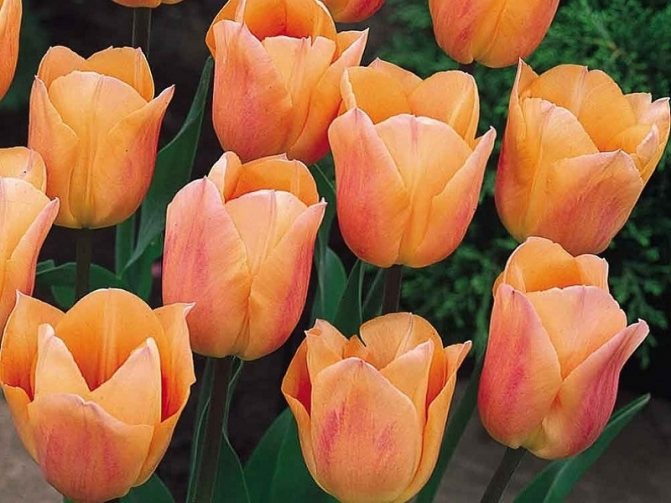

- grade Epricot beauty - fragrant apricot beauty up to 50 cm high takes first place in the top ten varieties of the English Royal Society of Florists. The color at the base of the bud (7 cm) is salmon pink with a lilac bloom, creamy white around the edges, and lemon yellow outside. The goblet buds do not fully open in the sun.
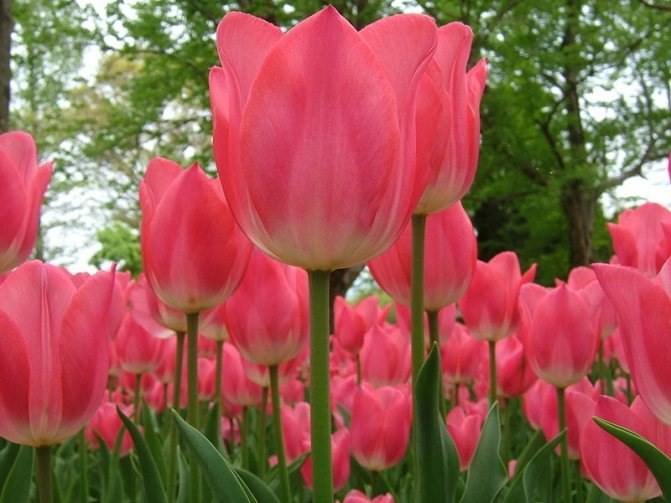

- grade Chrismas dream grows up to 25–40 cm. Peduncles are strong, flowers of warm pink tones are cup-shaped.
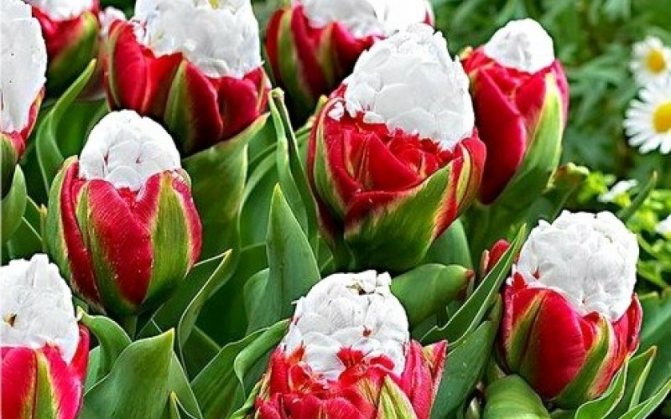

- and finally a charming tulip Ice cream - "Ice cream", pinkish petals of which frame the snow-white core. The colors are so unusual that it is impossible to resist the desire to decorate your garden with this splendor.
At home, a good bulbous planting material should be at least 3.5 cm in diameter, with strong integumentary scales, an intact bottom. Remember, you need two spare to forcing five onions.
The date of distillation depends on the tulip variety and the storage conditions of the material. Early flowering plants are recommended for early distillation and kept in the cold for 10-16 weeks.
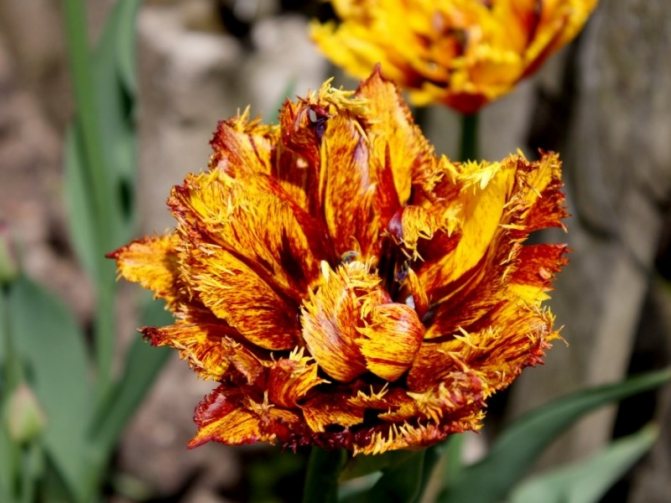

For medium and medium early forcing, Darwin hybrids are used, keeping them in the cold less than early flowers.
The material for late forcing is class 5 tulips.
There are other more unpretentious and no less beautiful bulbous. By forcing at home, bulbous irises, fragrant muscari, fragrant and multi-flowered (daffodil) daffodils will bloom together.
How to prepare bulbs for planting
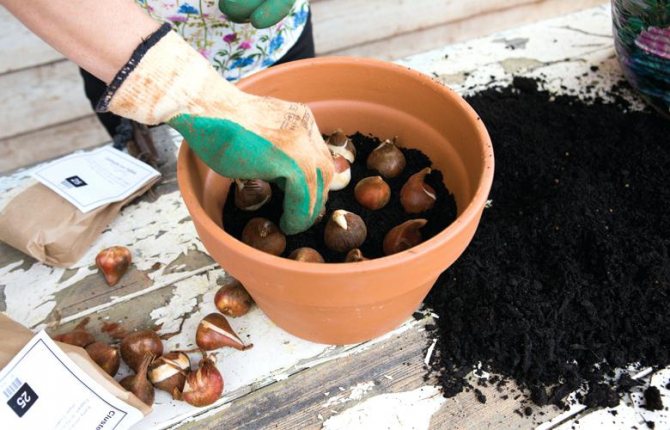

To ensure good flowering, tulips must not only be properly dried and preserved. It is required to properly prepare them, carry out a number of works to increase germination, reduce germination time, and protect against diseases. Observe these recommendations:
- Carefully examine, remove all bulbs with signs of disease and damage. If the surface is soft to the touch, also discard such corms. Leave only completely healthy and strong.
- Calibrate the planting material. For distillation in a short time, select only options with a diameter of 3.5 cm or more. The larger the better, since there are many nutrients, the sprouts will appear as soon as possible.
- Be sure to remove the kids, if any. If this is not done, then part of the nutrients will be spent on their growth, they will form shoots, as a result, the buds will grow an order of magnitude smaller.When removing, proceed carefully so as not to damage the root collar.
- Prepare a solution of saturated pink potassium permanganate, do not make it too strong. Instead of potassium permanganate, it is allowed to use Heteroauxin, for this, add half of the tablet to 2 liters of water and stir until it is completely dissolved. Place the bulbs in the disinfecting liquid, stand for 30-40 minutes, then remove, dry on paper or cloth.
If the planting material was purchased in a store and processed before planting, then it is not necessary to specially prepare it. All work has already been carried out, it remains only to plant tulips as described below. Do not soak them for a long time, do not keep them in solution for more than 40 minutes.
Preparatory work before forcing
The tulip bulbs must be prepared for forcing. In early autumn, select healthy, full-bodied specimens, dry in a ventilated room and store for a month at a temperature of 22-25 degrees Celsius.
Before forcing, remove the husk, inspect the smooth shell, revealing hidden damage and cuts. Dip selected healthy bulbs in a solution of potassium permanganate for 30 minutes or in warm water for 5 minutes (40 degrees) for disinfection.
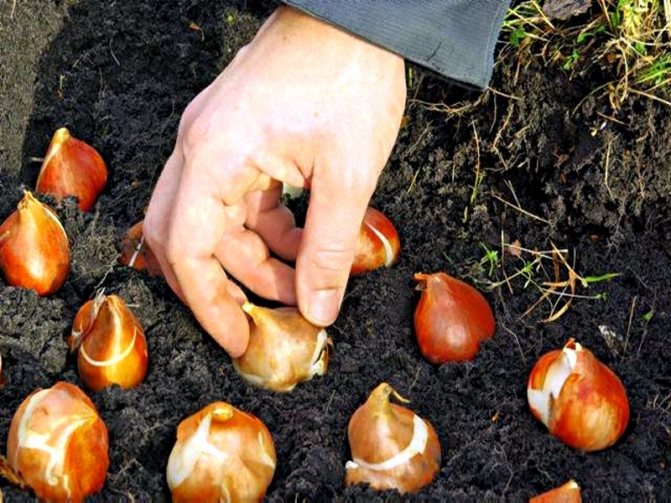

Forcing is carried out in a nutrient substrate that allows water and air to pass through (PH 6.5–7.0): in a sandy mixture of earth, sawdust and peat. Volcanic perlite is sometimes used. At home, a mixture of soil, manure and compost (2: 1: 1) with the addition of wood ash is used. Greenhouse soil is not suitable, as it contains fungal spores and harmful microorganisms. For distillation, even sawdust and peat should be pre-treated with lime mortar.
Step-by-step instructions for planting tulips
- Drainage is placed in the pots, at the very bottom. Drainage can be made of gravel or expanded clay.
- The soil is laid on the drainage, while taking into account that the bulb is flush with the edges of the pot when planting.
- The soil must be treated with a weak solution of potassium permanganate.
- The husks are removed from the bulbs, placed with the root down and slightly pressed into the soil. The top of the onion should be flush with the edges of the pot, but you can lower it another 1 cm.
- The bulbs are carefully covered with soil, leaving the tops. There is no need to tamp the ground.
- The planted bulbs are watered abundantly.
- Place the tulips in a cool place - perhaps a cellar. After a month and a half, the pots are placed in a warm place.
- The bulbs should be watered regularly and should be kept in a cool place at night. You can take rainwater or thawed water for irrigation.
- Once a week, flowers need to be fed with calcium fertilizer.
- When the sprouts reach 5 cm, they need to be taken out into the light. But they are taught to light gradually.
It is better to start planting in the fall - in September.
Tulips can also be grown in greenhouses and small greenhouses. It is important to provide them with proper conditions. Flowers do not like excess sun color. Therefore, it is important to protect them from direct sunlight.
It is worth controlling the level of humidity, periodically ventilating the room.


Forcing mode
So the soil is prepared. In planting containers, at the bottom of which there are drainage holes, we plant the onions every 5–10 mm and slightly deepen them. Then we spill the plantings with a solution of calcium nitrate (20 g of fertilizer per bucket of water), and place the containers in a cold room (with a temperature just below 10 degrees) for 22 weeks. By wrapping the bulbs in heavy paper, they can also be stored in the vegetable section of the refrigerator.
Temperature conditions during the forcing stage are critical. By lowering or increasing the temperature, you can control the timing of tulip blooming.
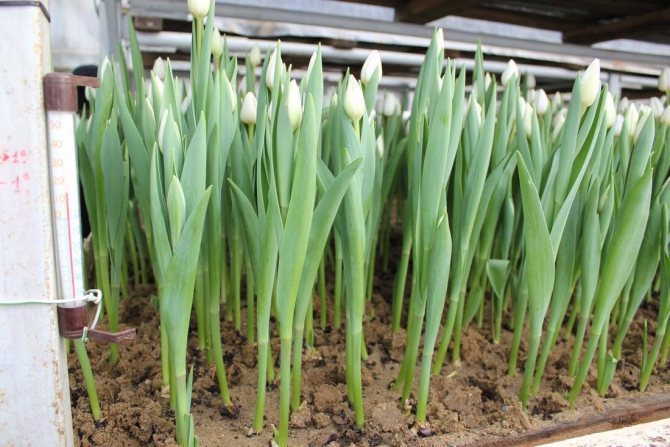

Until mid-December, sprouted bulbs need regular watering and humidity of at least 80%. Water the sprouts at the root, without affecting the leaves, stem. In the second half of the month, the temperature should be reduced by 2-4 degrees.In a heated room, with a temperature of up to +15 degrees, containers can be transferred only 1.5 months before the beginning of flowering.
To prevent the stems from stretching, they turn on fluorescent lamps indoors for 5-6 hours a day. Low sprouts are periodically covered with cardboard boxes, creating a comfortable climate. After a few days, the temperature is increased to 18 degrees. By the time the containers are moved into the room, the sprouts should be 5–7 cm high. Watering and feeding the plants with calcium nitrate should be continued, as this has a beneficial effect on the decorative effect of the flowers.
Care
The container with the sprouted material is brought into the heat when the sprouts stretch 6 cm, and the rudiment of the arrow at the bottom of the shoot will be well felt.
Did you know? The first written evidence of a tulip was found in a handwritten Bible of the X-XII century.
The main thing when transferring is not to harm, step-by-step care instructions:
- The first 4 days the temperature is maintained at + 12 ... + 14 ° С, while the illumination is weak, diffused. The plant is placed in bright light for 1.5 hours a day.
- The temperature is then increased by 4 degrees and full, bright lighting is provided. You need to know that the minimum brightness value should be 900 lux. The usual daylight hours are extended by 3-5 hours a day with the help of artificial devices. The lamp is located at a height of 0.5 m from the container.
- As soon as the bud begins to color, the temperature is lowered to + 15 ° C. When flowering is late, on the contrary, it is increased to + 20 ° C. If the bud is going to open earlier than the scheduled date, it is lowered to + 10 ... + 12 ° С.
- The flowers are watered daily, with cool water t + 8 ° C, it must be cleaned of impurities from the line, it is best to take thawed water. The procedure is carried out in the morning, irrigating the soil, it is not desirable to get on the leaves, there may be a burn after evaporation of the drops.
- After one watering, a solution of calcium nitrate (0.2%) is added. It nourishes and strengthens the flower arrow. It is not advisable to carry out other feeding: they inhibit the flowering process and do not have time to be absorbed by the plant completely.
- Plants bloom in 3 weeks.
Caring for tulips after cutting
After early distillation, the plant will no longer be able to form a full-fledged baby. Therefore, you should not make an effort to grow tulips. The exception is undersized varieties. The leaves and flowers are cut, and the bulb itself is dug out after three weeks to get an average size.
After the final forcing on tulips, leave the foliage, cut the flowers. Water the remaining stems for 21 days, then dig up the bulbous crops. This method of keeping allows some plants to re-create a viable baby. Drying is carried out for 14 days at 24 degrees, 30 days at 15–20 degrees, then at 15 degrees - until landing.
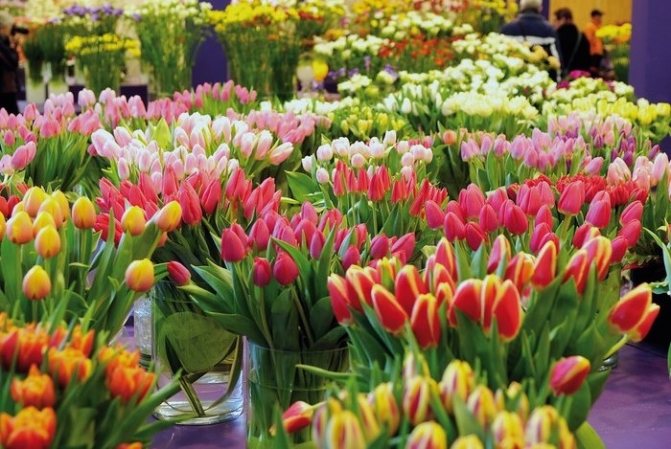

The bulbs do not germinate, do not deteriorate and are well preserved when stored properly. Tulips are planted in the soil at the usual time. Only 30% of the bulbs come from the March varieties. Small children from early varieties will be able to bloom only after 3-4 years.
Forcing tulip bulbs is available even to inexperienced gardeners. The main thing is to observe the technology of storage, maintenance of temperature, humidity and lighting. Having planted plantings on time, you will receive bright buds of winter tulips in winter.
How to grow tulips in a pot at home
An important step in growing indoor tulips in a pot is stratification in the cold. Immediately after planting, the container is moved to the refrigerator or to the basement - the temperature should be from 5 to 10 ° C. In such conditions, the seedlings are kept for 16-18 weeks, periodically moistening the soil.
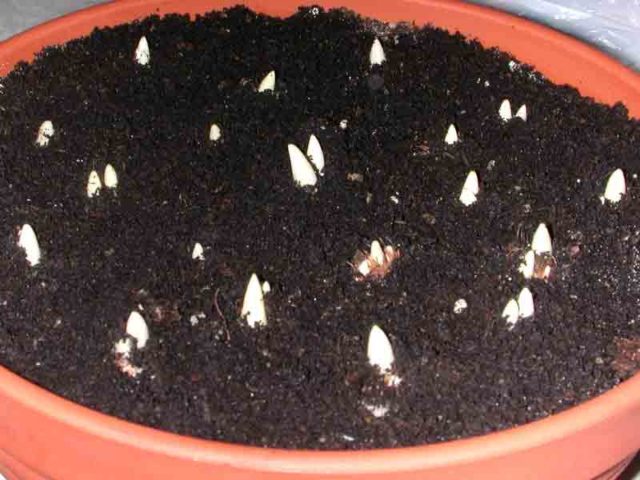

Tulips begin to sprout already during stratification.
Important! The first shoots above the ground will appear in 2-3 weeks. But the tubers must still be kept cold until the young stems are about 5 cm long.



